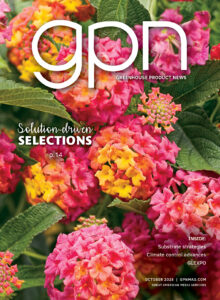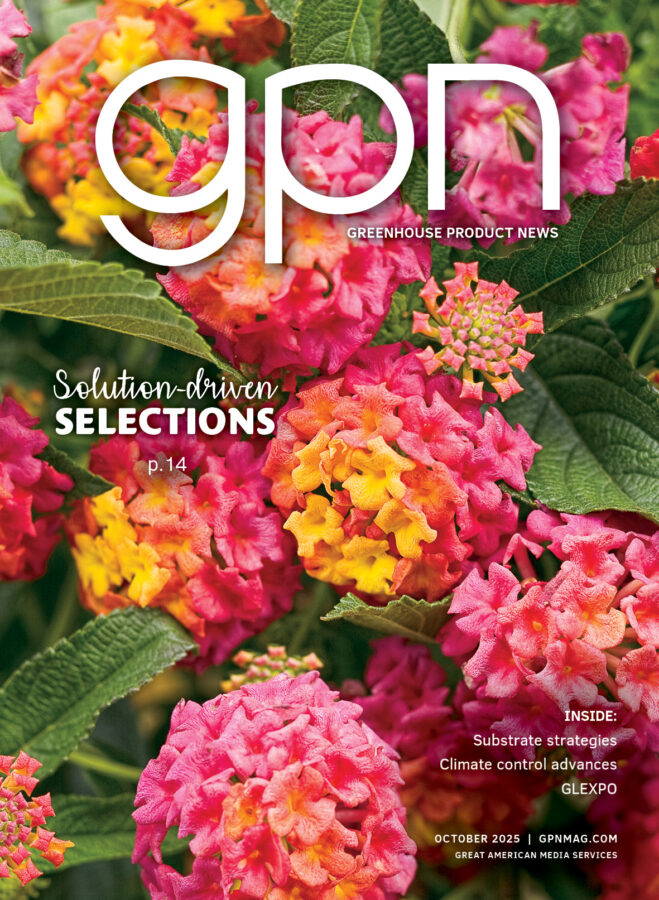Cutting Edge Greenhouse Technology
We now have 7 billion people living on planet Earth — a benchmark that has provided futurists with an opportunity to discuss foreseen limitations to continued population growth. We can also anticipate what will limit us in the production of floriculture crops in the future. Some common responses include high labor costs, insufficient labor availability, high energy and transportation costs, water restrictions, and increasing chemical regulation. To mitigate these current and future constraints, leaders in the production of plants and their products are researching and investing in technologies that enable them to be more sustainable.
Recently, I had the opportunity to work with the Agricultural Counselor of the Netherlands Embassy in Washington, D.C., the Dutch Ministry of Economics, Agriculture and Innovation, and the PR firm Ferguson Caras LLC to delve into how companies in the United States and the Netherlands are investing in sustainable greenhouse crop production. We interviewed growers, academics, visionaries, and industry experts on video to learn about and see how they have become more efficient and reduced inputs. The result: about 40 short videos that highlight their experiences and perspectives, which can be viewed at www.thesustainabilityinitiative.org and www.youtube.com/dutchsustain. Below are some common themes and brief insights about those we interviewed.
Profitability. A business is not sustainable unless it is profitable. Therefore, greenhouse investments must have a favorable cost recovery. A new technology may create a favorable buzz, but the buzz can wear off if doesn’t pay back within a reasonable period of time. In one of the videos, Charlie Hall of Texas A&M University discusses some of the considerations of making investments to a greenhouse. Growers talk about investments they have made and their expected economic returns.
Reduced energy. Nearly all large Dutch growers have invested in a combined heat and power (CHP) system, which uses natural gas to create heat, electricity, carbon dioxide, and water. It is a very clean and efficient way to heat a greenhouse, supply power for supplemental lighting, and generate CO2 to increase plant photosynthesis. Excess electricity is sold to the grid at a favorable price. The videos highlight this technology, as well as other ways to reduce energy including:
- light-emitting diodes (LEDs) for lighting plants indoors or in a greenhouse geothermal heating, where water warmed during the summer is used for heating in the winter
- solar panels that generate some of the electricity for a cutting-edge potted plant grower
- steps that a leading grower in Ohio took to reduce energy costs in an older range
- new greenhouse roof designs developed at Wageningen University
Reduced labor. Labor is usually the largest indirect cost in greenhouse crop production. The Dutch are leading the way in automation, with technologies to transplant, water, grade, sort and transport plants, as well as control the environment. The videos show how growers here and abroad have invested in those technologies and how they pay back over time. It should be noted that automation becomes much more complex, and thus expensive, as the number of crops that a grower produces increases.
Reduced water and chemical inputs. Nearly all growers in the Netherlands capture and store rain water, then treat it and use it on plants. Many also capture water runoff so that nothing leaves their facility. As we face increased water regulations, some growers in the United States are already adopting some of these relatively straightforward techniques. Growers are also using biological techniques to control greenhouse pests, rather than relying on chemicals. By using integrated pest management, we can reduce our chemical inputs and be more environmentally responsible.









 Video Library
Video Library 


















